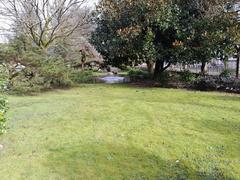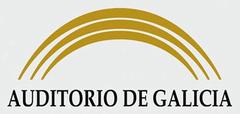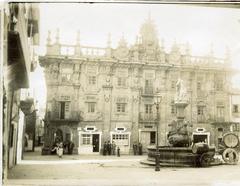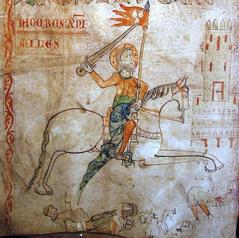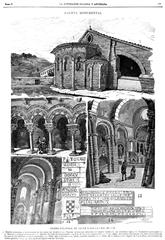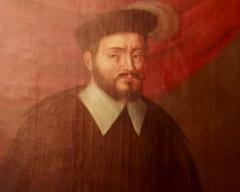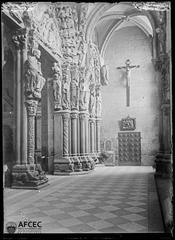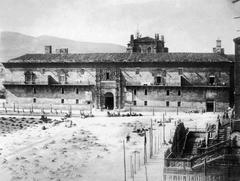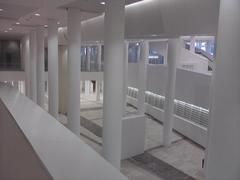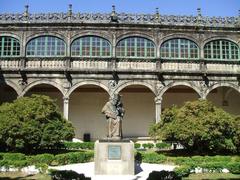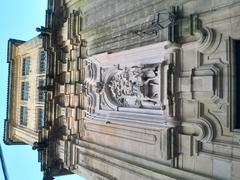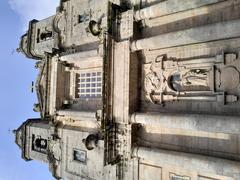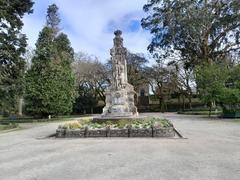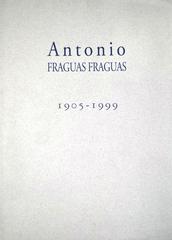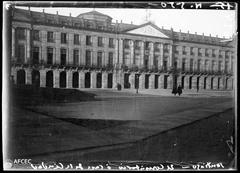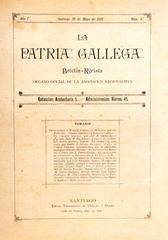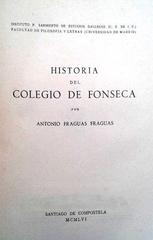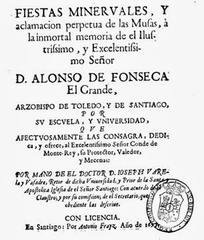
Porta do Camiño Santiago de Compostela: Visiting Hours, Tickets, and Complete Travel Guide
Date: 04/07/2025
Introduction
Porta do Camiño, meaning “Gate of the Way,” is one of Santiago de Compostela’s most emblematic and enduring landmarks. Historically, it served as the main entrance for pilgrims finishing the legendary Camino Francés, marking a pivotal threshold into the sacred city. Though the original medieval gate no longer stands, the site remains a vibrant symbol of Santiago’s spiritual and cultural identity. This guide provides a detailed overview of Porta do Camiño’s historical importance, practical visitor information, nearby attractions, and tips for making your visit meaningful. Whether you are a pilgrim, history enthusiast, or traveler, this resource will help you experience Santiago’s rich heritage.
Table of Contents
- Introduction
- Historical Background
- The Pilgrim Experience and Spiritual Role
- Visiting Porta do Camiño: Practical Information
- Nearby Attractions and Suggested Walking Routes
- Amenities and Services
- Frequently Asked Questions (FAQs)
- Conclusion and Visitor Recommendations
- References
Historical Background
Origins and Medieval Significance
Porta do Camiño’s origins are deeply intertwined with Santiago de Compostela’s rise as a major medieval pilgrimage site. Built between the 11th and 13th centuries as part of the city’s defensive walls, it became the principal gateway for pilgrims arriving via the French Way (Camino Francés) (Nomads Travel Guide). The gate’s strategic location at the eastern edge of the Old Town channeled millions of pilgrims toward the shrine of Saint James the Apostle, shaping Santiago’s spiritual and commercial life for centuries (Walk the Camino).
Porta do Camiño was not only a defensive structure but also a ceremonial entrance. Royalty, clergy, and dignitaries passed through it during significant events, such as archbishop investitures, while pilgrims marked their journeys’ end at this threshold (Xacopedia).
Architectural Evolution
The gateway’s design changed over time. After suffering destruction during the 10th-century raids led by Almanzor, it was rebuilt with Romanesque and later Gothic influences (Wikipedia). The double-arched medieval gate was ultimately demolished in the 19th century to allow for urban expansion, but its former location is now commemorated by a plaque and remains a central point for pilgrims and visitors.
The Pilgrim Experience and Spiritual Role
Porta do Camiño is more than a physical gateway; it is a profound symbol of arrival and transformation. For centuries, crossing this threshold marked the completion of the arduous Camino de Santiago pilgrimage, one of Christianity’s most important routes (Stingy Nomads). The ritual of passing through Porta do Camiño has endured, providing a moment for reflection, gratitude, and celebration for pilgrims of all backgrounds (Caminosantiagocompostela.com). The sense of communal achievement and spiritual fulfillment continues today, as thousands retrace this legendary path every year.
Visiting Porta do Camiño: Practical Information
Visiting Hours and Tickets
- Porta do Camiño is an open-air monument accessible 24 hours a day, year-round. There is no entrance fee or ticket required to visit the site.
- Nearby attractions such as the Church of San Pedro (typically open 10:00 AM–7:00 PM) and the Museo do Pobo Galego in the Convent of San Domingos de Bonaval have their own specific hours. Check official sources for current schedules.
Accessibility
- The streets leading to Porta do Camiño are generally pedestrian-friendly and paved.
- Some areas, especially Rúa de San Pedro, are cobblestoned and may present challenges for visitors with limited mobility, though the city has made improvements for accessibility.
Guided Tours and Events
- Guided walking tours are available through local operators, often including Porta do Camiño, the Cathedral, and other historical highlights (Evendo).
- The area is a focal point for cultural events, especially during the Feast of Saint James on July 25th, which features processions and festivities (Caminoways).
Travel Tips
- Best times to visit: Spring (March–May) and summer (June–September) offer lively atmospheres and mild weather. Early mornings are tranquil and ideal for photos.
- Getting there: Located at the northern edge of the Old Town, at the intersection of Rúa de San Pedro and Rúa das Rodas, about a 15-minute walk from the main train and bus stations.
Nearby Attractions and Suggested Walking Routes
- Rúa de San Pedro: A vibrant street leading from Porta do Camiño, filled with artisan shops, cafés, and bakeries.
- Church of San Pedro: Adjacent to the gate’s former site, known for its Baroque façade and community events.
- Museo do Pobo Galego: Galician cultural museum housed in the Convent of San Domingos de Bonaval.
- Praza de Cervantes: A lively square on the direct route to the Cathedral.
- Walking to the Cathedral: From Porta do Camiño, follow Rúa das Casas Reais and Praza de Cervantes to reach the Cathedral’s north façade in about 10–15 minutes.
Amenities and Services
- Cafés and Restaurants: Rúa de San Pedro boasts plenty of options serving Galician specialties like pulpo a la gallega and empanadas (El Correo Gallego).
- Shops: Camino souvenirs, outdoor gear, and local crafts are widely available.
- Accommodations: From pilgrim hostels (albergues) to boutique hotels—book ahead during peak season.
- Facilities: Public toilets and luggage storage can be found near the Pilgrim Office and main tourist areas.
Frequently Asked Questions (FAQs)
Q: What are Porta do Camiño visiting hours?
A: Porta do Camiño is an open-air site accessible 24/7. Nearby museums and churches have their own schedules.
Q: Is there an entrance fee or ticket required?
A: No. There is no fee or ticket required to visit Porta do Camiño.
Q: Are guided tours available?
A: Yes, local tour companies offer guided walks that include Porta do Camiño and other city highlights.
Q: How accessible is the area?
A: The area is mostly pedestrianized and accessible, but some cobblestone streets may be uneven.
Q: What else is nearby?
A: Key attractions include the Cathedral of Santiago de Compostela, Museo do Pobo Galego, and Rúa de San Pedro.
Conclusion and Visitor Recommendations
Porta do Camiño stands as a powerful symbol of Santiago de Compostela’s enduring legacy as a pilgrimage destination. While the original medieval gate no longer exists, its location continues to welcome thousands of pilgrims and travelers each year, offering a tangible connection to centuries of faith, hospitality, and culture. The surrounding neighborhood is rich with tradition, artisan shops, and local cuisine, making it the perfect starting point for exploring Santiago’s historic center.
To make the most of your visit:
- Start early to enjoy the peaceful atmosphere.
- Explore nearby attractions and take advantage of guided tours for deeper insight.
- Participate in local events, especially the Feast of Saint James.
- Use digital resources like the Audiala app for maps, tips, and updates.
For more detailed information and event updates, consult trusted platforms such as Caminoways, Turismo de Galicia, and PlanetWare.
Visuals and Media
Alt text: Historic Porta do Camiño gate, main entrance to Santiago de Compostela’s Old Town.
Alt text: Pilgrims walking along the lively Rúa de San Pedro street, approaching Porta do Camiño.
Internal Links
- Exploring Santiago de Compostela Cathedral: Visitor’s Guide
- Top Walking Routes in Santiago’s Old Town
- Camino de Santiago: Tips for First-Time Pilgrims
References
- Walk the Camino
- Evendo
- Wikipedia
- Stingy Nomads
- Caminosantiagocompostela.com
- Xacopedia
- Arts & Culture Google
- One Day Itinerary
- Inspain News
- Nomads Travel Guide
- Go Ask a Local
- Caminoways
- Turismo de Galicia
- PlanetWare
- El Correo Gallego

